Search
Search Results
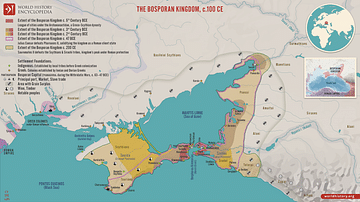
Image
The Bosporan Kingdom, c.100 CE
This map illustrates the rise and development of the Bosporan Kingdom (c. 480 BCE – 341 CE), an ancient state located around the Bosphorus Kimmerios (Kerch Strait), encompassing parts of the eastern Crimea and the Taman Peninsula. Founded...
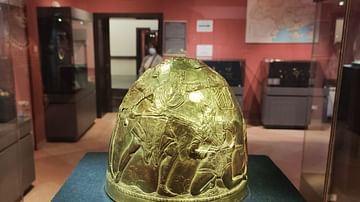
Image
Sychtian Gold Helmet
Ceremonial helmet of a Scythian ruler. 4th century BCE. Found in 1988 near Zrubne village, Donetsk oblast, Ukraine.
Museum of Historical Treasures of Ukraine, Kyiv.
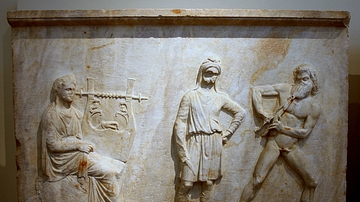
Image
Apollo and Marsyas
National Archaeological Museum, Athens, 215. 330-20 BCE. This relief slab is one of four that made up the revetment of a pedestal (only three survive), and was found at Mantineia, Arcadia. The pedestal either acted as a base for a statue...
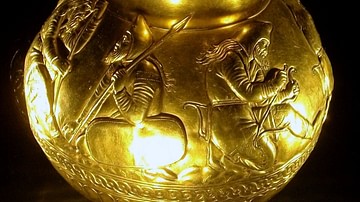
Image
Kul-Oba Beaker
Scythian gold beaker from the Kul-Oba kurgan, Crimea. 4th century BCE. It shows bivouacked soldiers: one demonstrates how to string a bow; another removes his comrade's tooth, and another bandage a fellow's hurt leg. State Hermitage Museum...
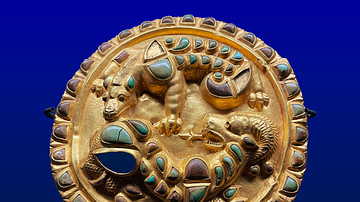
Image
Gold Buckle with Beasts Fighting Scene
Gold buckle with garnet, amber, and turquoise featuring a scene of beast fighting. This gold buckle is one of the most important pieces of the Gonio Treasure, dated to the 1st-2nd century CE. Its style approaches that of animal depictions...
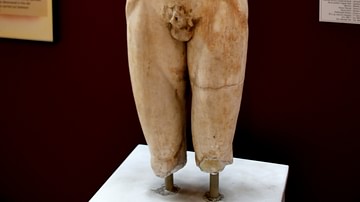
Image
Statue of Marsyas from Tarsos
Marsyas was the Phrygian satyr who was skinned alive when he challenged Apollo to a musical contest and lost. Marsyas was usually sculpted alone, as an isolated statue. However, this statue was found as part of a group of statues, depicting...
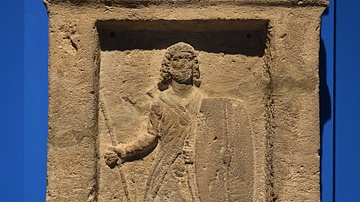
Image
Bosporan Soldier
Grave stele of Staphilos, son of Glaukias, from the Bosporan Kingdom. It depicts a soldier with the traditional Bosporan long hair and beard, and Scythian costume. It dates to the 2nd century CE and comes from the Necropolis of Panticapaeum...
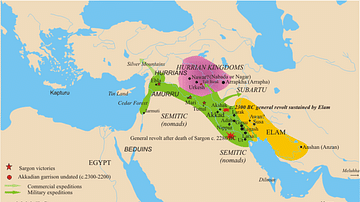
Definition
Akkad and the Akkadian Empire
Akkad was the seat of the Akkadian Empire (2334-2218 BCE), the first multi-national political entity in the world, founded by Sargon the Great (r. 2334-2279 BCE) who unified Mesopotamia under his rule and set the model for later Mesopotamian...

Definition
Mansa Musa I - The Richest Man in History?
Mansa Musa I was the ruler of the Mali Empire in West Africa from 1312 to 1337. Controlling territories rich in gold and copper, and monopolising trade between the north and interior of the continent, Mali grew extremely wealthy. Mansa Musa...
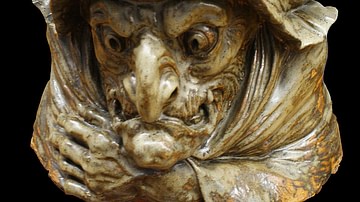
Definition
Baba Yaga
Baba Yaga (Baba Jaga) is a witch or ogress from Slavic folklore who lives in a magical hut in the forest and either helps, imprisons, or eats people (usually children). She is among the most famous figures from Slavic folklore as guardian...